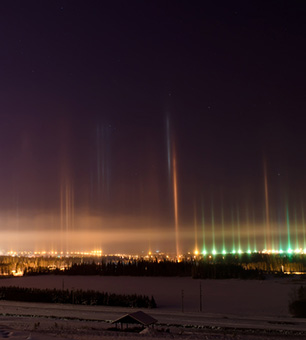It’s time for America to leave the 19th century behind, and keep the lights on.
Last night, the U.S. Capitol building and other Washington, D.C. landmarks went dark, as powerful wind gusts of up to 55 MPH knocked out power for thousands of people in the D.C. area.
In fact, as of 10 PM last night, around 5,000 people were in the dark in the D.C. metropolitan area, for what was a very, very cold night.
While mass power outages in and around our nation’s capital are not unusual, they’re becoming more frequent, and they’re a sign of this nation’s aging electrical infrastructure, which is stuck in the 19th century.
We’re still using the model of giant, centralized power stations that then distribute electricity over long distances to areas as large as states and blocks of states.
This is bad for a number of reasons.
First, it makes us very vulnerable to the sort of cyberattack that we perpetrated on Iran when malware we developed with Israel took down their nuclear centrifuges.
Second, it’s incredibly inefficient.
Nearly two-thirds of the fuel burned to generate electricity is lost in the generation and delivery process. Or, in other words, our electric power system operates at only 33 percent efficiency
And we lose 5 percent of all the electricity generated through what are called “line losses” – electricity that gets burned up through radiative and resistive losses from long-distance high-tension wires.
Third, this system centralizes both political power and wealth in the hands of a very few companies and individuals, who then use that power and wealth to lobby for laws that help them keep their monopoly or near-monopoly status.
According to a previously unreported federal analysis, the U.S. could suffer a coast-to-coast blackout for weeks – and even months – if terrorists took down just nine of the country’s 55,000 electric-transmission substations on a hot summer day.
The study, conducted by the Federal Energy Regulatory Commission, or FERC, was released last summer, and distributed to the White House, Congress, and various federal agencies.
It said that if just nine substations were knocked out by a coordinated attack, the nation’s entire electrical grid could be down for 18 months or more, because it’s very hard to replace large electrical equipment.
And this is all because today we’re still operating with an electrical system that’s been in place since the late 19th century, when just a few electrical companies provided electricity for large portions of the United States.
It’s a model that leads to fragility. It’s a model that leads to more blackouts, brownouts and nights in the dark. It leads to inefficiency, and it concentrates political power and wealth in the hands of a few, while making everybody else vulnerable to power loss and monopoly-driven high prices.
We need to go from that model of fragility, to a model that’s resilient, and that limits blackouts and cold nights spent in the dark.
So how do we get there?
Resilience requires diversity. It requires a wide variety of energy providers across America, on the local and community levels, and a variety of different forms of energy.
It requires that every home and building become a power generating station itself.
Think about it like this.
A forest is an incredibly diverse environment. In a forest, there are hundreds of species of plants and animals.
If that forest were to suddenly face some type of severe weather event, like monsoons or drought, it would definitely take a hit.
But, because of the diversity of the forest, a diversity that creates resilience, it would make it through.
Now, compare the forest to a 5000-acre wheat field.
A 5000-acre wheat field isn’t diverse at all. It’s basically just wheat.
If that wheat field were to face a devastating flood or drought, everything would be wiped out, and recovery would be nearly impossible, because there’s not enough diversity of plants or animals in the wheat field to bring it back to life.
Right now, America is the wheat field. We need to be the forest. We need to get more diverse in the forms of energy that we use, and in the number of providers that we have.
In fact, we all need to become providers ourselves.
Some countries, like Germany, have already figured that out.
In Germany, solar panels dot the roofs of houses and building all across that nation.
Germany is the cloudiest country in Europe, but still, on one day in May of 2012, solar power provided 40 percent of total electricity consumption in that country.
Cities, towns, and even homes across Germany are able to rely more on local energy generation, and less on a national grid.
And the German government has set a goal for solar power and other renewable energy sources, to make up 80 percent of total electricity production by 2050.
We’re as smart and innovative as Germany. We invented most of the technologies involved in solar power systems!
And that’s just solar power. Wind power, geothermal and other renewable forms of energy are on the rise, too.
The bottom-line is that we have to break away from our addiction to 19th century Big Energy, and break up the $220 billion electric industry, so that a few monopolistic companies are no longer controlling large chunks of the electricity produced in our country.
It’ll make us safer, more resilient, and more efficient. It’ll save us money. And it’ll radically reduce greenhouse emissions, protecting our future.
Come on America, let’s keep the lights on!
